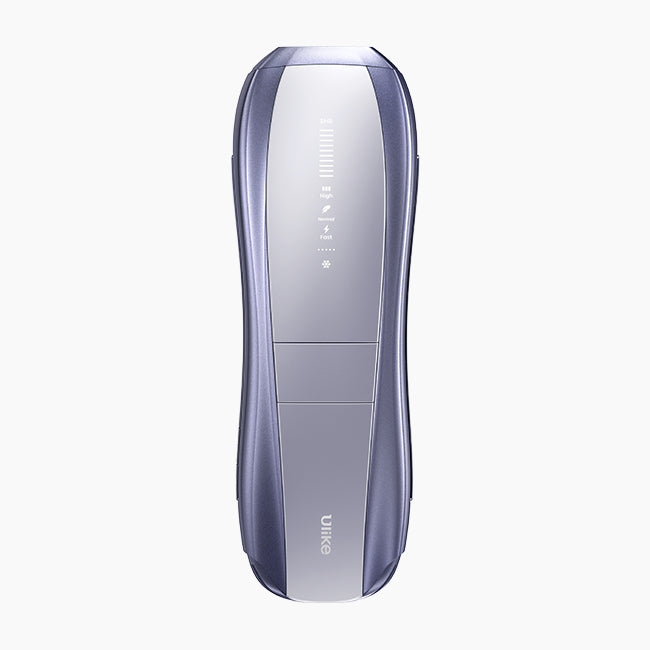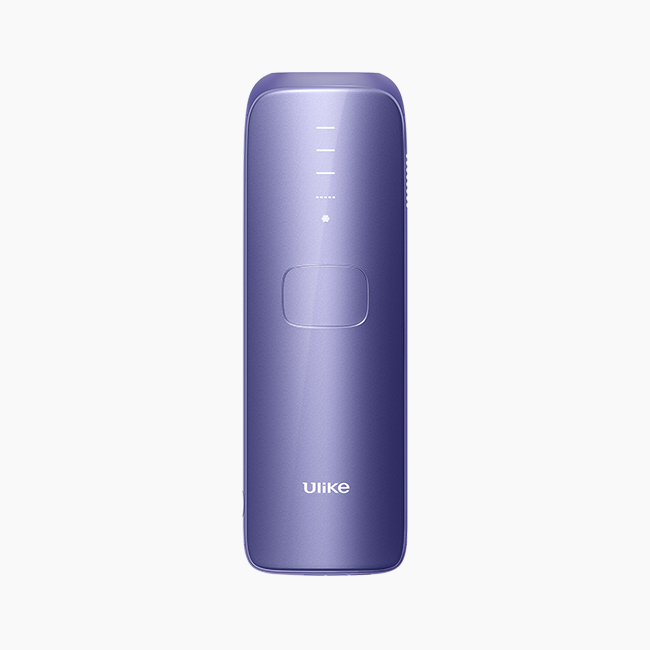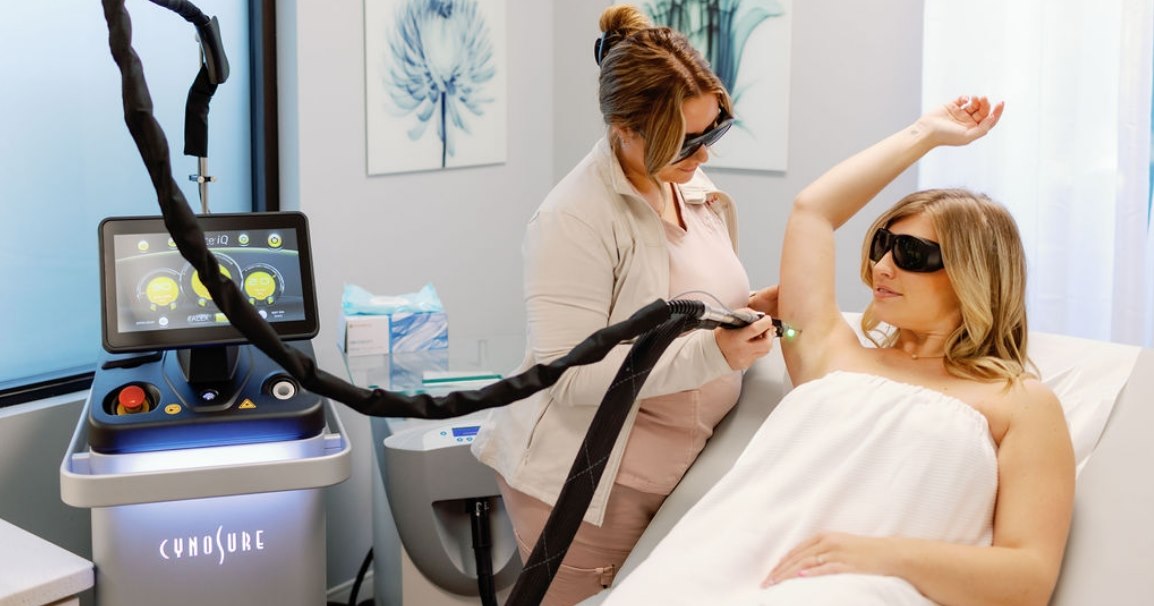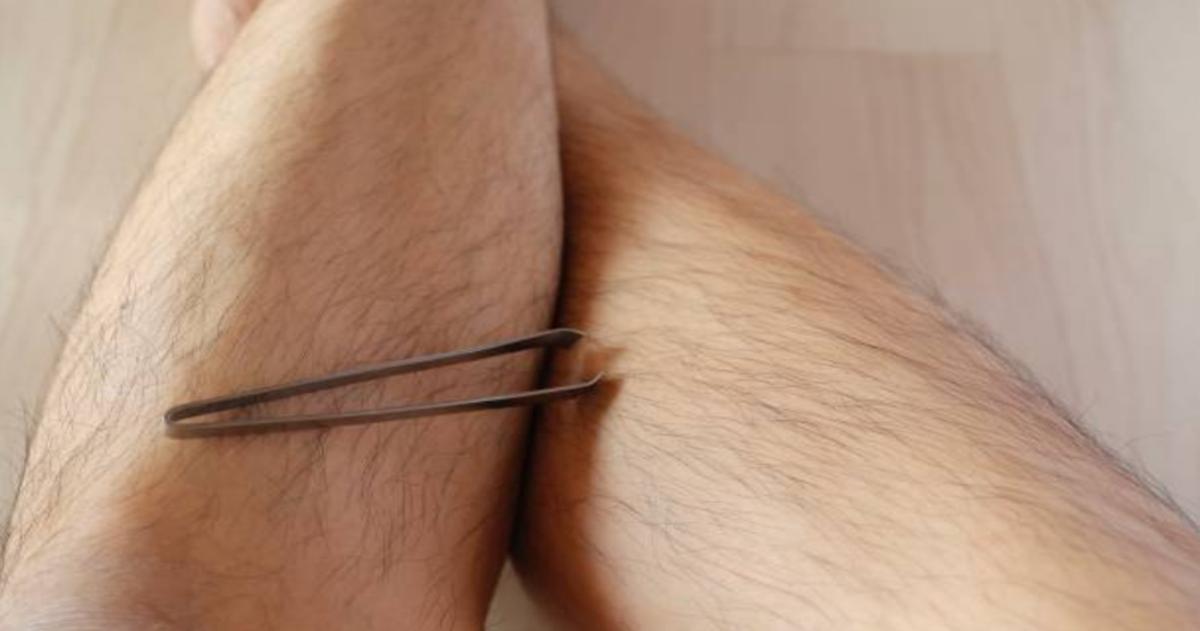Do you know that hormones, especially sex hormones, differ between men and women, and even the same hormones are found in different proportions? Besides, the hormonal status of a male is consistent throughout one's life, whereas the hormonal level of a female varies.
The other very important stage of life when the rhythm of hormones in a woman’s body undergoes drastic transformations is during and after menopause. All these changes affect the general well-being and the overall look of women. For instance, they begin to experience uncontrolled growth of unwanted hair and their skin starts flushing while at the same time, there is weak bone.
We will describe, in this article, the main stress it brings such as menopause facial hair how it is caused, and which hormones cause it.
Table of Contents:
- Part 1: Does Menopause Cause Facial Hair?
- Part 2: Why Do Women Grow Facial Hair After Menopause? (The Role of Hormones in Facial Hair Growth)
- Part 3: How to Stop Facial Hair After Menopause?
- Part 4: BBest Ways to Remove Facial Hair After Menopause
Part 1: Does Menopause Cause Facial Hair?

Yes, menopause can cause facial hair. If you imagine your teenage years when your vellus hair started growing into the terminal and your pregnancy when unwanted hair started sprouting in weird places, you can guess that menopause being a similar condition where hormones change, also causes facial hair.
In an informative article by Cleveland Clinic, they discuss the effects of menopause on skin and hair. The same article mentions that women start growing unwanted hair on the upper lip and chin during menopause [1].
Further, a cross-sectional population-based study of subjective changes in scalp, facial, and body hair after menopause published in the National Library of Medicine concludes that "Facial hair gain was cited by 39% of females with the chin being the most frequent site for new growth (32% of women)" [2].
Both the personal experience of older women and clinical studies reveal that menopause causes facial hair in nearly 50% of women who exceed 50 years of age. So, answering your question "Is facial hair a symptom of menopause?", yes, it is positive.
Part 2: Why Do Women Grow Facial Hair After Menopause? (The Role of Hormones in Facial Hair Growth)
The reasons behind the hirsutism in women in their late forties or in their fifties with male androgenization that gets engendered by an altered pattern of sex hormones in a woman's body. Let us explain the hormones which are involved in this process and their functions.
Evolution of Sex Hormones and Effect on Hair Growth Post Menopause
The gonadal hormones in the same way induce the development, maturation, and activity of the reproductive system in the same related sex. Moreover, they assist in the rise of sh secondary sexual characteristics as well. These hormones include,
- Male Hormones: This is primarily male androgen which testosterone is a perfect example of.
- Female Hormones: There are 2 types, estrogen and Progesterone.
On the other hand, men have thick fine facial hair all thanks to the elevated levels of testosterone in them. However, women only have fine hair as it is the responsibility of estrogen and progesterone to inhibit the development of facial hair. Most of the time, however, it still sometimes happens that some ladies do grow facial hair which is rather bushy.
To explain that those particular women have elevated levels of testosterone. Also, there are those women who all through their lives had very scanty vellus hairs but who in their synthesis of female hormones they witness are thicker. It is well and good, but the course of menopause, whose endeavors in productive activity are accompanied by estrogen and progesterone decline in female gonadal synthesis while the testosterone synthesis does not change.
For facial hair growth, it is obvious that men have thick beards, all thanks to the high amount of testosterone in them. On the other hand, women only have fine hair because estrogen and progesterone prohibit the growth of facial hair. Still, you see that some women have coarse facial hair, right?
This is because the level of testosterone in those women is high. Now, there are women who had peach fuzz throughout their lives but developed thick facial hair in menopause. Well, the level of estrogen and progesterone is reduced during menopause while the level of testosterone remains the same. This results in the shift of male to female hormonal ratio towards the male side.
Following that period, women grow facial hair. Another contributor to this evolution is the hormonal receptors on the blood vessels, as Kayla Blanton from Prevention.com explains [3].
Despite the fact that hair can occur on the whole face of a woman, some parts tend to be more hairy than others. Unfortunately during this time, it is common for facial hair to occur,
- Mustache: hair growing above upper lip as thick as mustaches
- Chin: sparsely, only a few hairs poke through a thick bush of growth.
- Temples: longer hairs that are found near the ears.
Part 3: How to Stop Facial Hair After Menopause?

The rapid growth of unwanted facial hair just stresses you out, doesn't it? Worry not, as we have got some remedies for you.
From the changes in lifestyle to specialized medical care, discover how you can reduce the growth of facial hair after menopause.
Tips to Slow Down Hair Regrowth After Menopause
Lifestyle changes help in maintaining the balance between estrogen and testosterone. Thus, here are some self-care tips
- Keep up with a healthy diet: A balanced diet that consists of proteins, carbohydrates, fats, and fiber will keep all these hormones in check.
- Exercise regularly: Exercising regularly might not affect facial hair much. But it surely improves mood and physical health.
- Apply spearmint oil: Spearmint oil is proven to reduce facial hair growth.
- Take supplements: Some supplements have herbs and other ingredients that reduce the level of testosterone in the body.
- Maintain ideal weight:Ideal weight with less fat will provide little cholesterol for the formation of testosterone.
Temporary Methods to Remove Unwanted Hair
In addition to lifestyle improvements, you need self-grooming methods to appear flawless. So, these methods are suitable for menopause facial hair removal.
Threading or Plucking
Threading or plucking is a common and traditional hair removal method to remove facial hair. This method is used to shape eyebrows and removes the hair from the upper lip and chin as well.
It is,
- Cheap
- Hypoallergenic
- Travel-friendly as only 1 cotton thread is needed
Shaving
While shaving works great for facial hair in women as it exfoliates the top layer of skin as well and can be used for menopausal facial hair, it is not one of the most efficient hair removal methods.
This is because the hair that regrows back after 3 to 5 days has blunt ends and appears thicker and denser.
Waxing
While hard wax is more ideal, soft wax can still be applied. Still, hard wax is more suitable for facial hair as it's less messy, and nearly painless as well. Moreover, it is fantastic for giving your eyebrows the perfect shape.
Waxing removes hair from the roots and allows you to enjoy hairless facial skin for upto 2 weeks. Although the results of waxing last for 4 weeks, menopausal facial hair regrows quickly. Also, waxing is painful because hair grown after menopause has thick roots.
Facial Hair Removal Creams
Hair removal creams that dissolve the hair strands by chemical reactions are mainly used for intimate hair removal. But, they are equally effective for facial hair as well. Hydrating hair removal creams contain very gentle chemicals to dissolve facial hair.
Thus, you can use a facial hair removal cream for painless hair removal that lasts for 1 to 2 weeks.
Medical Treatments to Control the Levels of Hormones After Menopause
When home remedies do not reduce your facial hair regrowth, here are some medical treatments you can try.
Some of these options are discussed by doctors at the Endocrine Center [4].
Prescription Medicines
There are certain medications that reduce the effect of testosterone on the hair follicles or reduce the production of testosterone in the first place. For example,
- Spironolactone, an oral drug to reduce menopause facial hair
- Eflornithine creamthat inhibits enzymes involved in stimulating hair follicles
Dr. Hart has mentioned these treatments in “Yes, Menopausal Facial Hair Is a Thing—Here’s How to Deal With It” [5].
Medicine That Helps with Insulin Control
Often with aging, the ability of the pancreas to synthesize insulin decreases. There is an inverse relationship between insulin and androgen production. When the level of insulin reduces, the level of androgens increases.
In such cases, controlling the level of insulin by weight loss, exercise, improved diet, and insulin-controlling drugs like Glucophage helps in the reduction of menopausal facial hair.
Hormonal Replacement Therapy
As the major defect causing menopause facial hair is the shift of sex hormone levels towards the male side, replacing female hormones reduces unwanted facial hair growth as mentioned in the Endocrine Center [6]. Some drugs used for HRT include,
- Androgen suppressing drugs
- OCPs
- GnRH
- Steroids
Part 4: Best Ways to Remove Facial Hair After Menopause
Temporary methods of post-menopausal laser hair removal put a burden on the mental health of ladies getting old because it comes back every time they remove it. Thus, hair removal methods with long-lasting results prove to be best for facial hair during menopause.
IPL Hair Removal

As a result of hormonal level adjustments, facial hairs start to grow thicker while skin loses its plumpness. As the skin becomes thin, it is more receptive to even slight pain and the thick hair becomes difficult to remove due to increased sensitivity.
This makes the entire temporary treatment options of hair removal for women in the menopausal stage quite uncomfortable. Hence, we recommend the Ulike Air 10 device for optimal post-menopausal women's hair removal. Some of the advantages of Ulike Air 10 are as follows:
- An At-home device is more cost-friendly and can be purchased in installments
- The use of ice cooling advanced technology with its highly effective treatment modes makes the session fast and comfortable.
- A high energy output of approximately 26 J/ cm0 kills even the most persistent follicles
- It also maintains the privacy of its users as not everyone feels uncomfortable in letting others touch them
- It is FDA-Cleared and therefore can be used anywhere on the body with no worries.
Clinical Laser Hair Removal
A second semi-permanent option to remove unwanted facial hair after menopause is in-office laser hair removal. It uses an intense and highly focused beam of light to destroy hair follicles.
Its safety and results are similar to that of IPL hair removal. However, the time required to show over 90% results is around 1 year while the Ulike Air 10 handset gives you the same results in 3 months.
Furthermore, if time consumption and expenses of laser removal are also concerns for you, it is better to do your own DIY laser hair removal at home with Ulike.
Conclusion
The sprouting of hair on the face at and after menopause mainly takes place because of a decrease in the level of estrogen and progesterone that automatically increases the level of androgens in comparison.
Whatever your hormonal levels and the intensity of facial hair growth be, you can use the techniques above to get rid of unwanted facial hair. From shaving and waxing to at-home laser hair removal, you can select one that suits you the best according to personal preference.
Furthermore, controlling the levels of hormones with HRT, insulin control, and lifestyle improvement also helps in hair growth reduction.
References
- https://health.clevelandclinic.org/heres-how-menopause-affects-your-skin-and-hair
- https://pubmed.ncbi.nlm.nih.gov/21128905/
- https://www.prevention.com/health/a61774701/menopause-facial-hair/#what-is-menopausal-facial-hair
- https://www.endocrinecenter.com/blog/unusual-hair-growth-and-menopause-whats-the-link
- https://www.prevention.com/health/a61774701/menopause-facial-hair/#how-to-get-rid-of-menopausal-facial-hair
- https://www.endocrinecenter.com/blog/unusual-hair-growth-and-menopause-whats-the-link






